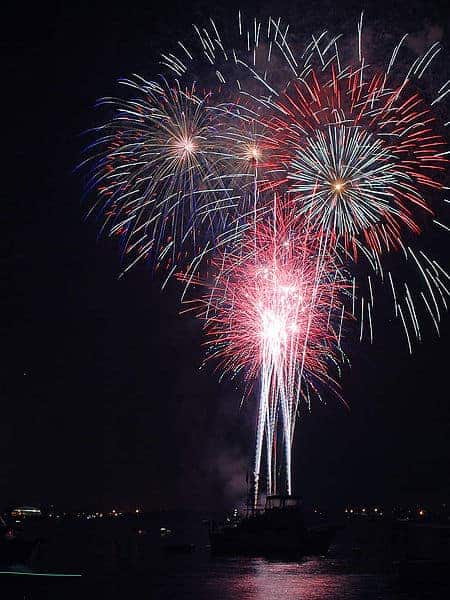So a check of the fine particulate matter in Central Fresno on the evening of Jul. 4, 2020 indicates microscopic specks of soot, chemicals and liquid droplets in air measured 150 micrograms per cubic meter (ug/m3) at 10 p.m. corresponding to a ROAR (Real-time Outdoor Activity Risk) Level 5 reading – meaning Very Unhealthy air. This was according to data ascertained by the San Joaquin Valley Air Pollution Control District as reflected on the Air District’s RAAN (Real-time Air Advisory Network) page accessible on its Web site here.
All of this points to pyrotechnics activity at the neighborhood level and little else.
Also witness what happened in Clovis, a neighboring community located to Fresno’s northeast. There the monitor for PM 2.5 at two hours prior to midnight read an Unhealthy 126 ug/m3, also ROAR Level 5, effectively duplicating what was going on at that same time in Central Fresno located nearby.
Though not quite reaching the reading that Central Fresno did, the measurement still was nonetheless high.
All other monitoring sites – in the Fresno urban area – incidentally, measure ozone only.
Now consider that Central Fresno’s PM 2.5 reading during the evening of Independence Day in 2019, where retrieved corresponding monitoring data showed the level to be 66 ug/m3 which is otherwise Unhealthy or a ROAR Level 4, only this time it was recorded at midnight (24:00 hours on 7-4-2019 or 00:00 hours on 7-5-2019) instead.
Meanwhile, Clovis’ 2019 reading: an 11 p.m. reading of 122 ug/m3 here again, a ROAR Level 5 – Unhealthy. The two years’ figures for Clovis, though they differ, the difference between the two is not all that much.
Interesting and important to note is that PM 2.5 replaced ozone during those late nighttime hours as the main pollutant of concern. As to ozone in Central Fresno on Jul. 4th it reached a high of 68 ppb at 8 p.m., a ROAR Level 2 or moderate concentration just two hours earlier. PM 2.5, fine particles smaller than 2.5 micrometers in aerodynamic diameter (20-30 of these microscopic specks can be placed across the width of a human hair), can cause lung damage when breathed in. Additionally, because of their tiny size the fine particles can enter the bloodstream where the blood can move them to various parts of the body, namely, to other organs and the brain causing further damage.
Okay, so, why the difference between the two years’ PM 2.5 measurements and to what could this difference be attributed? Could it be high-temperature-related?
On Jul. 4, 2019, high temperatures in Fresno were in the low-to-mid 90s. This year, temperature hit a high of 100. Could this explain the disparity?
Important to keep in mind is with the spread of the SARS CoV-2 virus top on people’s minds and pretty much dictating all, around-town designated locations where people can gather and watch approved fireworks displays as a way to celebrate the July 4th holiday, those said locations this year were ordered shut, forcing would-be fireworks display attendees to do or go without. On the other hand, the old standby, that is, the low-tech, on-the-street, basically, do-it-yourself substitute, was one available option. Another, of course, was to drive a ways to get access to a sanctioned display.


